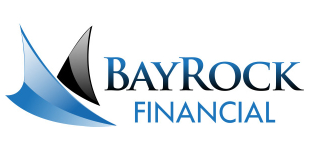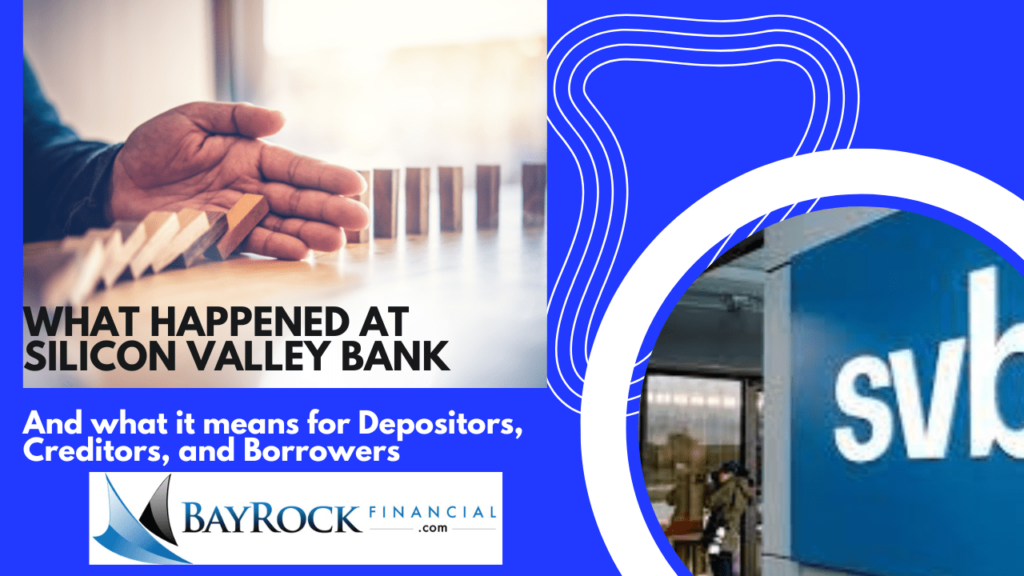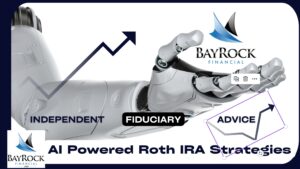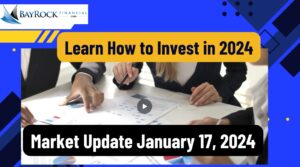What Happened at SVB
Over the weekend, the Federal Depository Insurance Corporation (FDIC) placed Silicon Valley Bank into receivership.
After announcing a mid-quarter update last week, SVB scared investors and depositors alike, with the news they had sold billions of long-term treasury bonds at a significant loss to shore up their balance sheet.
This announcement caused a panic and a large number of depositors requested withdrawals causing a good old fashioned “run on the bank”. SVB then ran into a massive liquidity crisis and couldn’t cover all the deposits which then led to the largest bank failure since 2008.
SVB will now likely be sold to the highest bidder, or assets sold off in order to cover deposits in excess of the $250,000 insurance amount.
FDIC to the Rescue for Depositors, Creditors, and Borrowers
According to the FDIC, all depositors will be made whole, whichever route is followed. Investors and shareholders, on the other hand, are likely to lose their investment in the fallen bank. Keep in mind, this is not a bailout and taxpayer money is not being used to “save” the bank. FDIC is a federal agency that insures all depositors at banks up to $250,000 or $500,000 for joint accounts and is meant to instill confidence in the nation’s banking system. FDIC is merely holding up its end of the bargain and ensuring this remains true for all depositors at Silicon Valley Bank. Deposits in excess of the insured amount will receive “receivership certificates”, that will be made whole once assets of the bank are sold off or another bank comes in to purchase Silicon Valley Bank.
In the meantime, many startups and venture-backed companies that have exposure to Silicon Valley Bank may run into issues with payroll, and other recurring banking operations. Which in turn, could cause a ripple effect through portions of the economy.
Your Next Steps
-
Monitor how much cash you’re holding at any FDIC-insured bank and if you’re in excess of the insured amounts, consider opening another bank account at a separate FDIC-insured bank.
-
Diversify and Allocate Assets for Risk Management. Silicon Valley Bank purchased too many long-term treasury bonds while rates were very low. As rates have quickly risen, the value of those bonds plummeted. Laddering the maturity dates on their bonds or ensuring they hedged their interest rate risk may have avoided this disaster. All investors can learn this lesson, again and again, diversification and asset allocation are essential elements for long-term wealth building.
Revisit your Risk Number and review your “investment policy statement”. This is a great time to update your financial plan instead of listening to the noisy financial short-term headlines. I understand that market volatility is scary, your financial plan is the key to managing the risk and opportunity of everyday life, recovering from the unexpected, and realizing your highest purpose.
If you have any questions or would like to discuss this in more detail, I am always available!
Best,
Jim
JRM 1:18 PM CT March 13, 2023
Jim Munchbach, CFP®, CPCU®, CLU®, ChFC®
Book a Free Consultation with a CFP® Professional at BayRock Financial, LLC. BayRock is an Independent Fiduciary Investment Adviser registered with the State of Texas and other jurisdictions where exempt. This communication is not intended as an offer or solicitation to buy, hold or sell any financial instrument or investment advisory services. We do not guarantee the accuracy or completeness of any description of securities, markets or developments mentioned. The information provided is subject to change without notice and is being provided for educational and informational purposes only.






